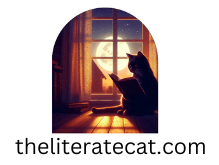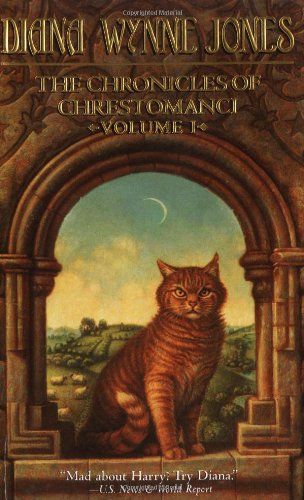
Cats, our enigmatic furry friends, have had a place throughout history in art and literature. In these realms, what does the cat symbolize? Is there a constant theme, or does the cat’s place change through time?
Many of us have been fascinated by these mysterious creatures, for a number of reasons. Their independence embodies a quality that resonates with our values of self-sufficiency and autonomy. They may be seen as protectors or guardians. Often they become identified with notions of magic and mysticism.
The Changing Image Of The Cat
Depending on the period of history, their image changes. In ancient Egypt they were worshipped as sacred animals. In Celtic and Roman times, they became associated with the underworld, supposedly having the power to travel between worlds. As such, they became guardians of the spirit realm.
In the Middle Ages, they entered a negative period, believed to be associated with witches. In medieval Europe, they often accompanied women in paintings, hinting at a companionship that might become misinterpreted as a sign of witchcraft.
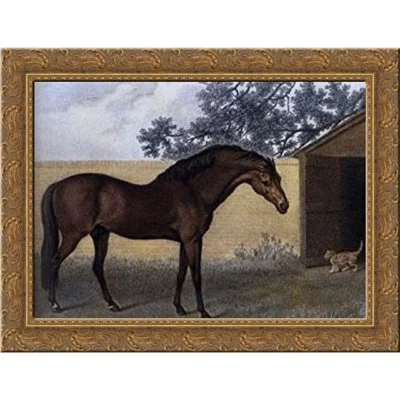
As a contrast, in the Far East they represented symbols of good luck and prosperity. The Chinese believed they would bring wealth, and often became depicted in art with gold coins or fish.
Spirituality reflected these beliefs. Medieval Christians saw them as negative symbols, embodying deceit and treachery. In contrast, native Americans often saw them as totems or spiritual animals. These people believed they represented independence, curiosity, and mystery.
The Oglala Sioux had a unique belief. They thought cats to be sacred, with the ability to see into the spiritual world. These people considered them protectors against evil spirits and negative energy.
As History Changes, So Does Its Symbolism
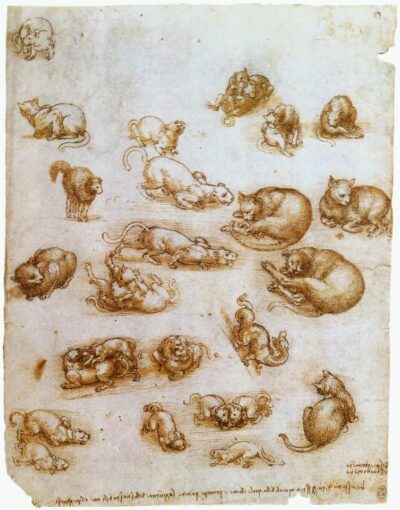
A cat’s symbolism depends on the portion of history the animal occupies. As Europe edged into the Renaissance, the perception of cats underwent a subtle shift. Art from this era shows cats as objects of curiosity and study, reflecting the growing spirit of inquiry into the importance of nature in human life.
Leonardo da Vinci said, “the smallest feline is a masterpiece.” He filled pages of his albums with sketches of cats doing many things. Then, in 1642, Louis Le Nain’s “Happy Family” shows the cat as a metaphor for motherhood, a cozy home, and liberty.
Moving forward, Edouard Manet’s “Olympia” shows a black cat standing at the foot of the painting in sharp contrast to the main theme, and capturing the cat in a picture of everyday elegance.
In another later theme, English portrait painter George Stubbs in the painting, “The Godolphin Arabian,” depicts animal friendship between the horse and a cat.
Cats as Muses in Modern Art
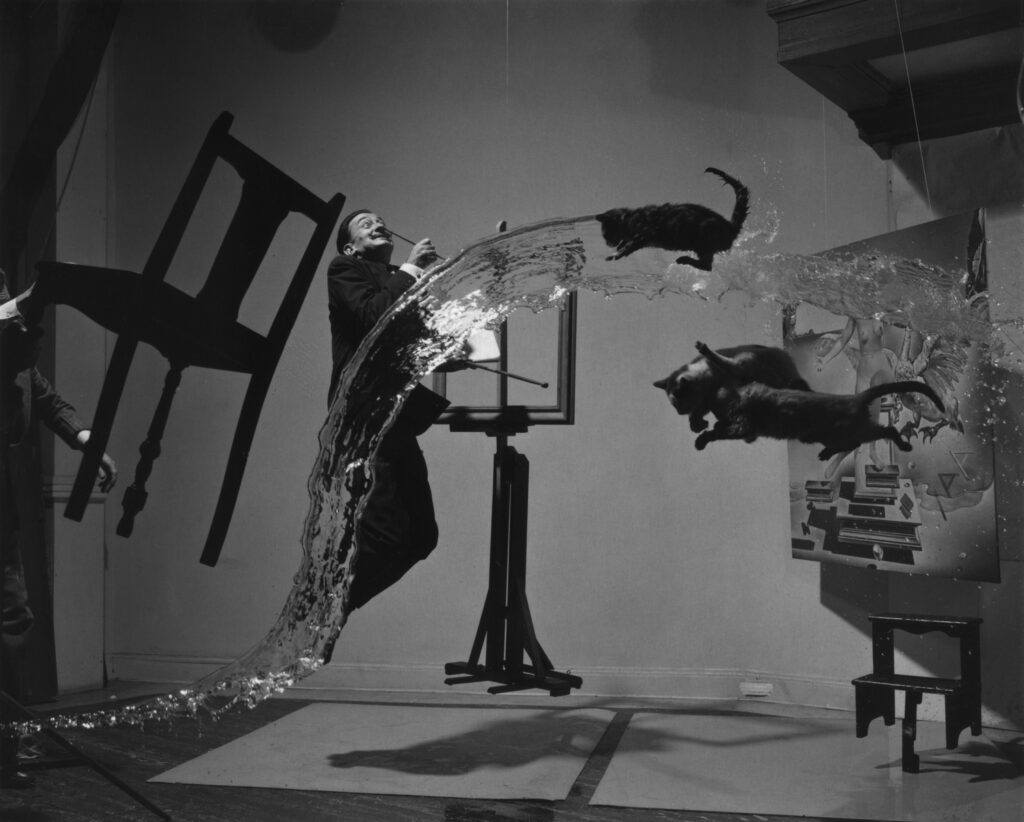
This thread of mystery and grace that cats provide continues into modern art. Pablo Picasso and Salvador Dali painted cats as more than subjects. Instead, they saw them as muses and as such, the cat inspired some of their groundbreaking work.
Salvatore Dali’s interpretation of cats carries a sense of the extraordinnary, creating a seamless blend between the real and dream world. Dali’s dreamscapes often gave cats a role transcending that of a mere pet. Instead, he aligns them with deeper psychological and symbolic facets of existence.
Cats in Pop Art
Andy Warhol had a deep affection for his many cats. All carried the name of Sam except for one who somehow went by the moniker of Hester. Warhol produced a series of colorful cat portraints which showcase an intimate part of his personal life. These also highlight the way pop culture can elevate the commonplace to iconic status.
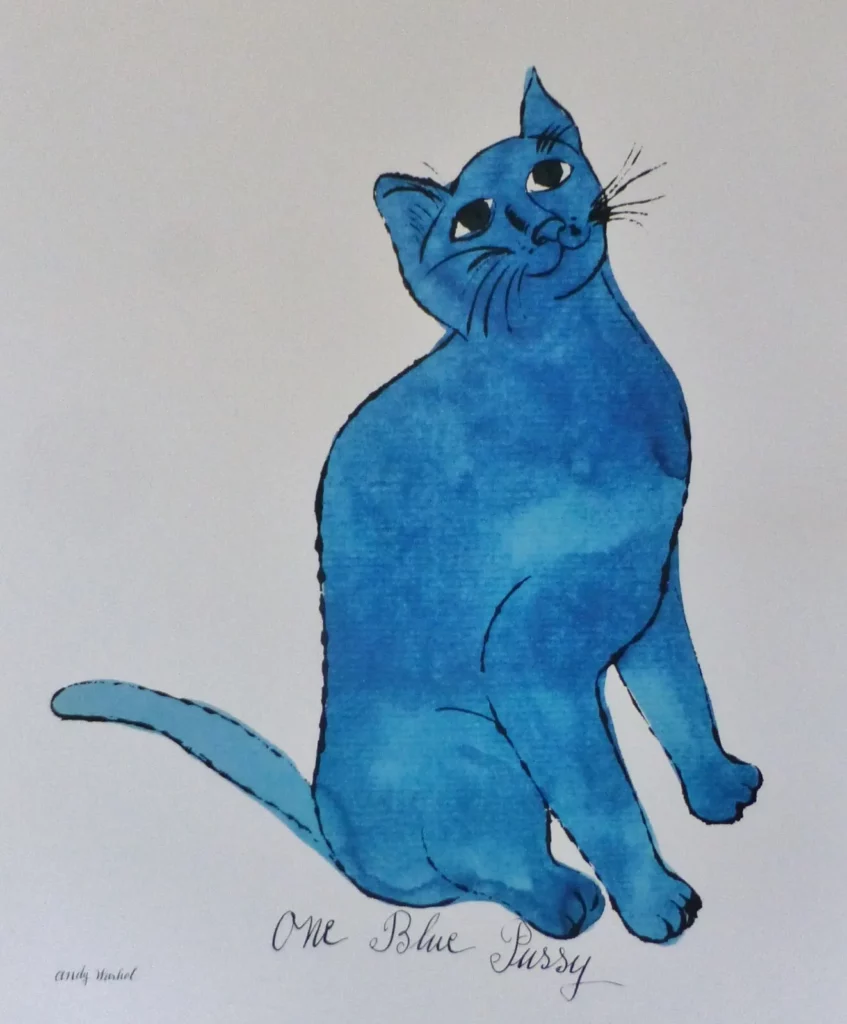
Today cat symbolism continues to evolve. These changes mirror our changing beliefs and attitudes. Thus, how we see the cat depends upon our unique view of history in a specific time and place. The cat serves as a canvas upon which artists project broader emotions and themes.
Literary Legacies: Felines in Fiction and Poetry
In literature, cats serve not merely as characters but as symbols with layers of meaning, from representing untamed nature to embodying mystical qualities. The written word provides us a different type of canvas to reflect our complex relationship with our feline companions.
A wonderful example is Lewis Carroll’s “Alice in Wonderland.” Here we meet the Cheshire Cat, a memorable figure embodying whimsy and philosophical depth. This self-reliant and mysterious creature adds an aura of secrecy and intrigue.
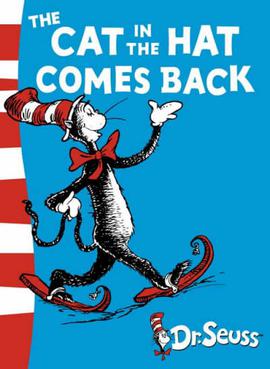
The Cheshire Cat includes an element of enchantment. How can any creature disappear, leaving only the smile behind?
Did you enjoy “The Cat in the Hat” when you first read it? A bit of mischief can turn a dull day into an adventure. Both magical and ordinary at the same time, this book by Dr. Seuss has presented a character that demonstrates the cat’s dual nature of chaos and comfort.
The Cat Often Embodies Our Own Aspirations
Have you read T.S. Eliot’s “Old Possum’s Book of Practical Cats”? This book inspired the famous musical, “Cats”. As in Eliot’s book, cats are often portrayed as being their own masters, unconcerned with human affairs. Often these cat characters embody characteristics we hope to possess ourselves, such as independence, resiliance, and the ability to adapt to change.
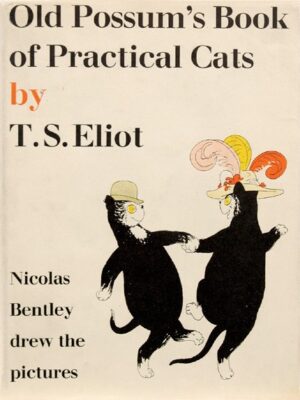
Other modern literature in which cats play an important role include novels like “The Master and Margarita” by Mikhail Bulgakof. Here, Behemoth the cat revels in chaos and delights in causing havoc. His character contains layers of intrigue, humor, and darkness.
Haruki Murakami, a contemporary Japanese author, includes cats as significant elements in his books. He assigns them the roles of bearers of secret gatekeepers between worlds.
The Cultural Impact of Cats in Art and Literature
The fascination with cats in literary works endures because it reflects our endless curiosity about these creatures. Seeing cats as independent entities, we often find their presence in a story as symbolizing something greater than their animal form — a streak of magic, a brush with the unknown, or a bridge to the inner workings of the human psyche.
The way in which cats are shown, whether in art or literature, often mirrors society’s values and norms at the time. Cats might be shown as anything from a symbol of divinity to rebellion. How they appear can be attributed to the cultural climate of the time.
Art And Literature Don’t Have A Monopoly
Cats don’t just appear in literature and fine art, but have pawed their way into the spotlight of popular culture as well. An example: The cat stars who appear on Instagram and capture the hearts of a large audience of internet users.
They can appear in advertising because they often appear to evoke a sense of comfort and familiarity. Marketers understand the power that our furry friends have in drawing an emotional response from people.
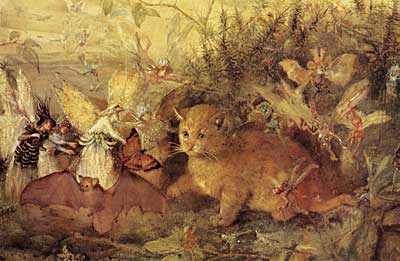
Who Is Behind That Furry Mask, Really?
Do these portrayals of cats genuinely reflect them as they really are? Or, instead, do we merely project our own human traits and emotions upon them? Due to their enigmatic nature it becomes at times hard to determine which represents the true cat and which our own ideas of their makeup. Being cats, they will surely continue to baffle and bemuse us, as we strive to learn their true nature.
References I used for this post:
symbolismguide.com/cat-symbolism/ purrlosophy.com/cat-symbolism-evolution-in-literature arthive.com/encyclopedia/62/Cat_symbolism_in_art
